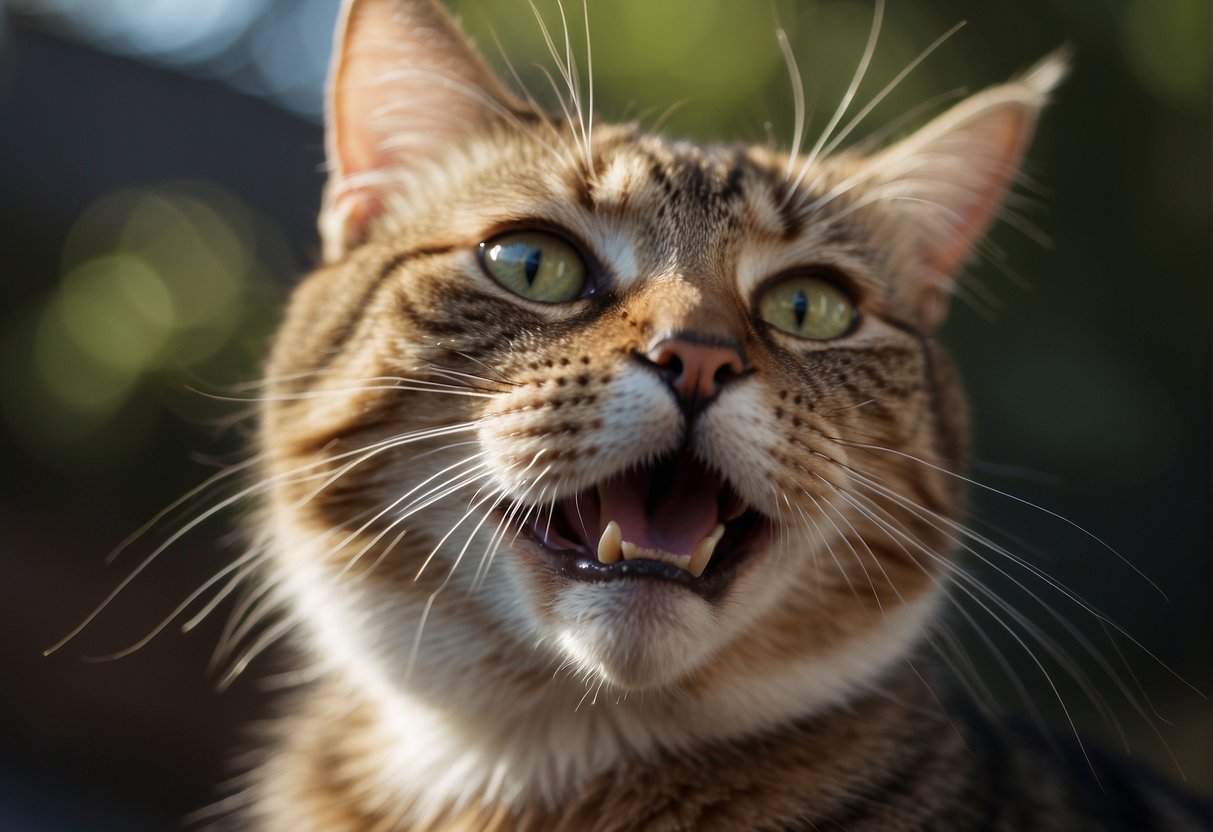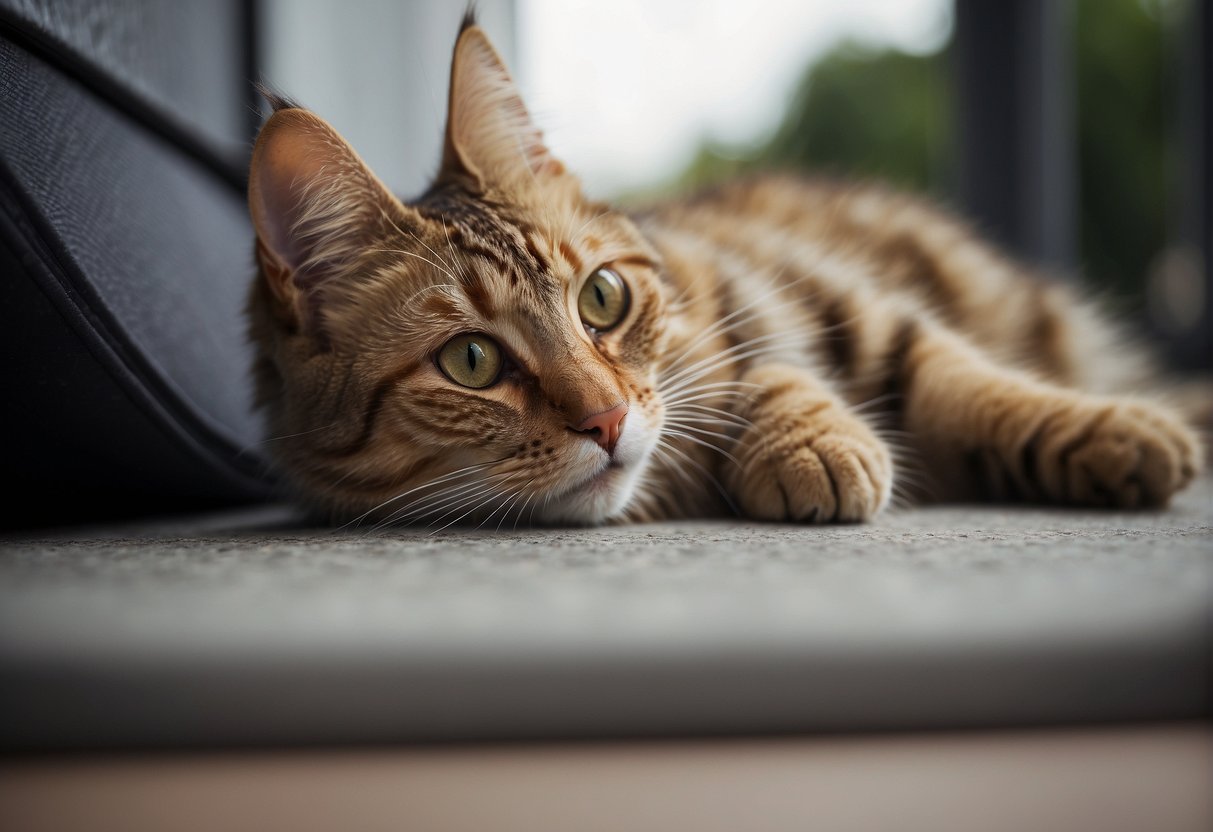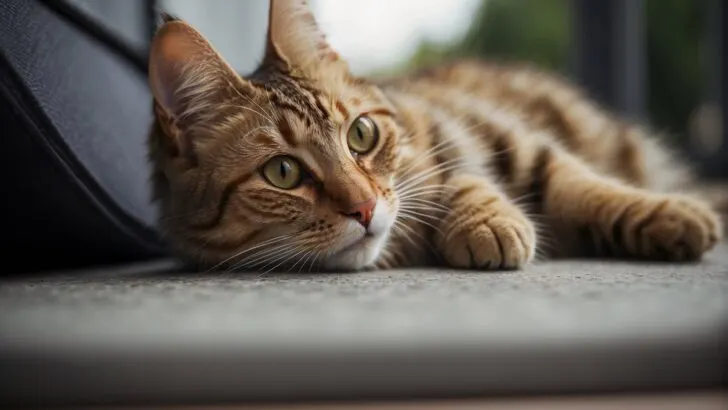Seizures in cats can be a distressing phenomenon for any pet owner to witness, and understanding their origins is crucial to managing the condition effectively. Your feline friend can experience seizures due to a variety of causes that span from genetic predisposition to environmental factors.
For instance, some cats may have epilepsy, a disorder characterized by recurrent seizures, while others might encounter a single seizure episode due to something more transient, such as exposure to toxins or a metabolic imbalance like low blood sugar.

The origins of seizures in cats are broadly classified into two categories: intracranial, which originate from inside the brain, and extracranial, which are caused by factors outside the brain.
If your cat has a seizure, it might be due to internal factors like brain tumors, inflammation, or infectious diseases such as feline leukemia. On the other hand, external factors like poisoning, liver disease, or even severe electrolyte imbalances can trigger seizures.
Each cat’s experience is unique; while some might present with subtle signs initially, others may have more pronounced episodes.
Most seizures are brief and can happen at any time of the day, with or without warning. Watching for patterns in your cat’s behavior or seizure timing can provide valuable insights to your veterinarian.
Typically, a thorough examination, which may include blood tests and neurological evaluations, is conducted to determine the underlying cause. This information is instrumental in crafting a management plan tailored to your cat’s specific needs and ensuring their well-being.
Seizures in Cats

When you see your cat experiencing a seizure, it can be quite alarming. Understanding what a seizure looks like and the potential causes can equip you to better assist your feline friend.
Types and Symptoms
Seizures in cats can often be divided into general categories: generalized seizures and partial seizures.
- Generalized seizures, sometimes known as grand mal seizures, typically involve the entire body. They are characterized by:
- Muscle rigidity
- Convulsions
- Loss of consciousness
- Twitching
- Paddling of the legs
- Partial seizures affect only a part of the body, which could include subtle signs such as:
- Uncontrollable twitching of a limb or the face
- Behavioral changes like suddenly running or hiding
In some cases, a cat might experience petit mal seizures, which can be less dramatic and often involve brief episodes of staring or subtle body movements.
Causes and Triggers
The root causes of seizures in cats range from genetic predispositions, such as idiopathic epilepsy, to acquired conditions affecting the brain.
- Idiopathic epilepsy is diagnosed when no other cause for seizures can be identified, and it may be influenced by genetics.
- External factors like toxins (e.g., certain plants, chemicals, or foods) can prompt seizures.
Among the internal medical conditions that can trigger seizures are:
- Infections such as toxoplasmosis
- Brain trauma that can result in inflammation or damage to brain tissue
- Diseases affecting the body’s key systems like kidney disease or liver disease
- Brain tumors, which increase pressure inside the skull
Stress can also sometimes trigger a seizure episode in prone cats. It’s essential to monitor your cat’s environment and ensure they feel safe and secure to help reduce these risks.
Diagnosis and Testing
When your cat exhibits symptoms that may suggest seizures, it’s essential to undergo a thorough veterinary evaluation and utilize specific diagnostic tools to determine the underlying cause.
Veterinary Evaluation
Your veterinarian will first perform a detailed physical and neurological examination, considering the seizure frequency and specific symptoms your feline friend is displaying.
They will inquire about your cat’s medical history, any instances of brain damage, and overall behavior changes. It’s crucial to provide clear details, as your observations can significantly aid in the diagnosis.
Diagnostic Tools
A sequence of diagnostic tests will be crucial to pinpoint the exact cause of the seizures. Common tests include:
- Blood tests: To check for underlying medical conditions like liver disease or electrolyte imbalances.
- Urine tests: To screen for systemic disorders or toxins.
- X-rays: These can rule out problems within the skull that may be affecting the brain.
- Ultrasound: This can be used to examine internal organs for any abnormalities that might cause seizures.
- Cerebrospinal fluid analysis: To detect infections or inflammation in the brain.
- MRI: Magnetic Resonance Imaging provides a detailed image of the brain to identify any anomalies or lesions.
Treatment Options for Cat Seizures
When your cat experiences a seizure, it can be alarming. The treatments available depend on the underlying cause but primarily focus on managing and reducing seizure activity.
Medical Treatments
Your vet might prescribe anticonvulsant medication to manage your cat’s seizures. The most commonly prescribed are:
- Phenobarbital: An effective and widely used medication that can reduce seizure frequency. Your vet will determine the appropriate dose and monitor blood levels to minimize potential side effects like lethargy or increased appetite.
- Other medications may include levetiracetam or zonisamide, especially if your cat does not tolerate phenobarbital well.
In case of status epilepticus, which is a prolonged seizure that lasts more than 5 minutes or several seizures without full recovery in between, immediate emergency veterinary care is critical to prevent brain damage and save your cat’s life.
Surgical and Alternative Therapies
For seizures caused by brain tumors or structural abnormalities in the brain, surgery could be a treatment option, depending on the location and operability of the tumors. Your vet will guide you through the risks and benefits of such a procedure.
Beyond conventional medicine, some cat owners explore alternative therapies such as acupuncture or dietary modifications. However, these should never replace conventional treatment without consulting with your veterinarian.

My name is James, and welcome to FAQCats!
Along with our team of cat owners, expert pet enthusiasts, and pet professionals, we aim to write engaging helpful, engaging content about cats. At FAQCats we strive to provide content that’s accurate and fun to read. Our team writes about everything related to cats; even the most complex of topics. Through extensive research and caring for our own fur-pals, we’re able to provide something cat owners worldwide will love. Have a look around, and leave us feedback anytime!

